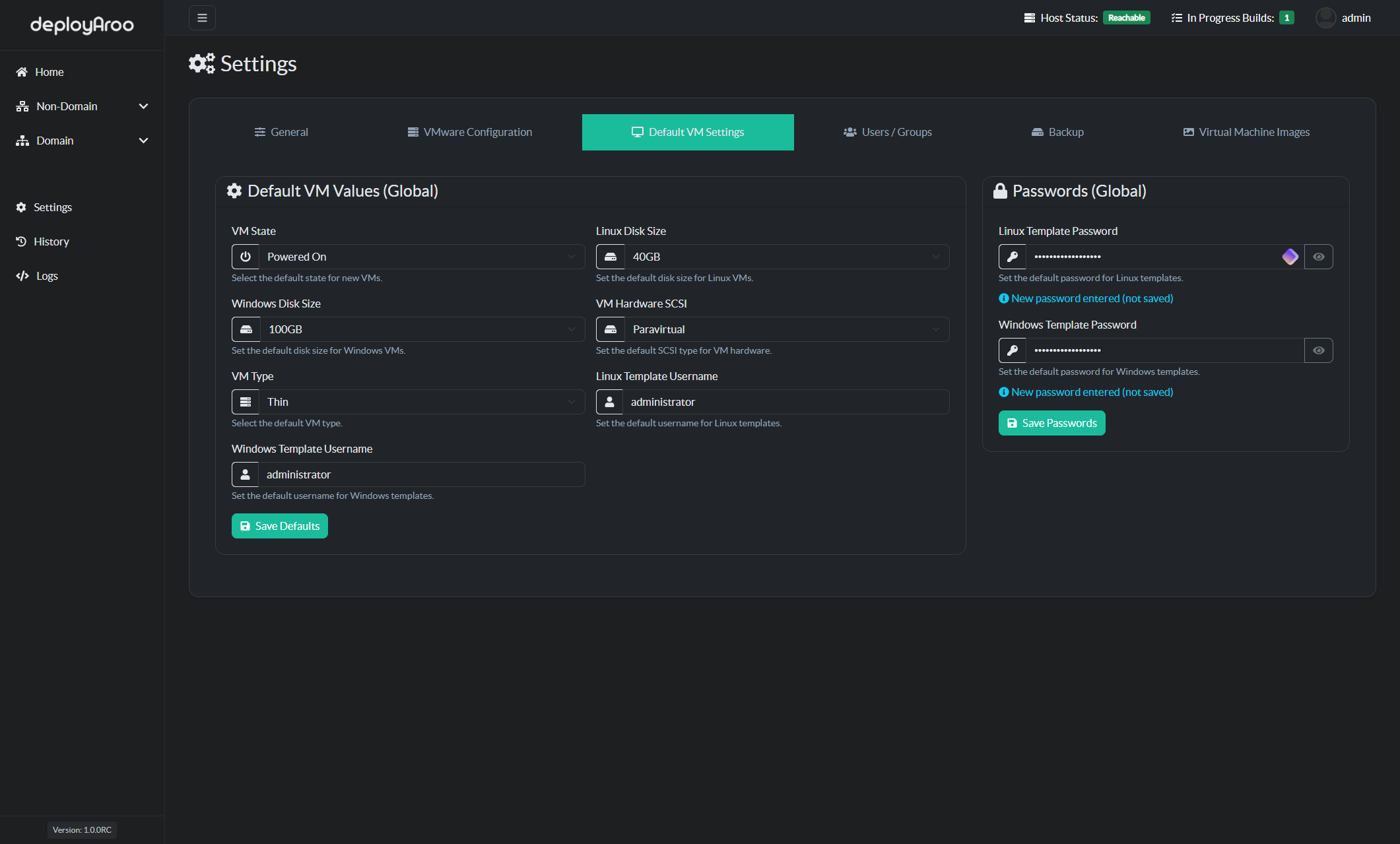Default VM Settings¶
1. Accessing Default VM Settings¶
Navigate to Default VM Configuration¶
Tip: Regularly reviewing and updating default VM settings ensures efficient and consistent VM deployments.
-
Access Settings Menu:
- Locate and click on the Settings option in the main navigation menu.
-
Navigate to Default VM Settings:
- Within the Settings menu, find and select the Default VM Settings section.
2. Configuring Default VM Values¶
Customize Default Settings for VM Deployments¶
Important: These default values will be applied to all new VM deployments unless manually overridden during the deployment process.
-
Review Current Settings:
- Examine the existing default values for VMs.
-
Save Updated Defaults:
- After making your changes, locate the Save Defaults button.
- Click Save Defaults to update and apply the new settings.
3. Setting Template Passwords¶
Configure Passwords for Post-Deployment Configuration¶
Note: These passwords are crucial for Ansible configuration. Ensure they match your VM templates.
-
Enter Linux Template Password:
- Locate the field for Linux template password.
- Enter the password that matches your Linux VM templates.
-
Enter Windows Template Password:
- Find the field for Windows template password.
- Input the password that corresponds to your Windows VM templates.
-
Update Password Settings:
- After entering both passwords, find the Save Passwords button.
- Click Save Passwords to update and store the new password settings.

4. Verifying Updated Settings¶
Confirm Changes to Default VM Settings¶
Tip: Always verify your changes to ensure they've been applied correctly.
-
Review Updated Values:
- After saving, review the displayed default values to confirm your changes.
-
Test New Defaults:
- Consider initiating a test VM deployment to ensure the new default settings are applied correctly.
Next Steps¶
After configuring your default VM settings, you may want to:
Simplify your VM deployments with Deployaroo
Get Started | View Demo (Coming soon) | Report Bug | Request Feature